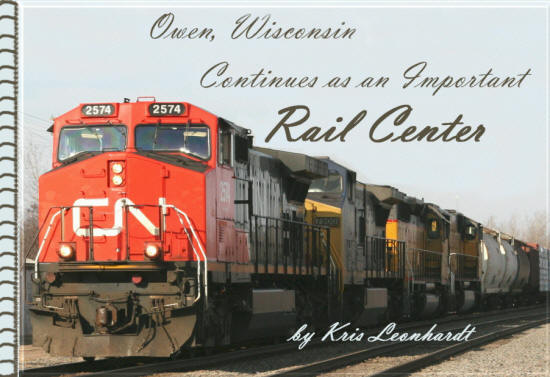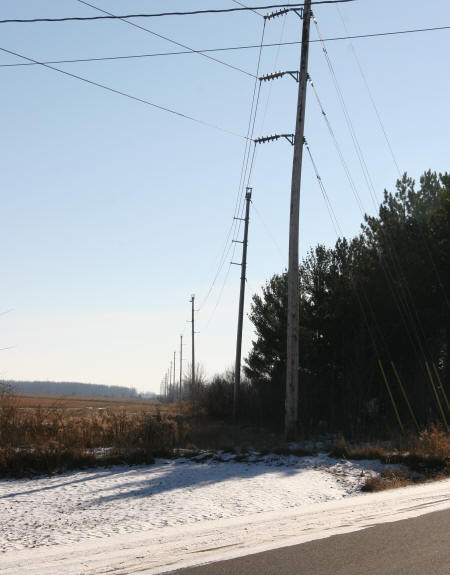

Part 1 of 3
The depot is filled with excitement. Passengers and well-wishers crowd the platform, as people wait to board the train while others are getting off.
The ticket window is crowded, as people line up to purchase tickets or make reservations.
The baggage room is bussling, as passengers make their way to check in trunks, suitcases, and other items.
As departure time approaches, the fireman works to build the steam pressure and water level in the boiler.
As the passengers settle in their seats, the engineer completes his final walkthrough. At the posted departure time, the conductor lets out a holler, "All aboard!" and signals the engineer with a wave of his hat. As the train proceeds forward, people stand on the platform to waving goodbye. Soon all is quiet.
In the early 1900's, railroads provided a very important means for passenger travel. At its busiest, railroad companies serving Owen offered a total of six passenger trains traveling in four directions. The introduction of the automobile provided a more rapid and practical means for travel and passenger service soon met its decline.
Freight service, however, has been a mainstay for the railroad companies that serve Owen from the origin of the railroad until the present. In late 1800s, logging companies were often the originator of railroad service, as they found this a practical means to transport product. As the population grew and scattered throughout Wisconsin, the railroad became an important resource for delivering wheat, flour, and other necessities throughout the state. Today, the railroad remains an important vehicle for freight delivery and hauls anything from automobiles to chemicals.
The introduction of the railroad in the Owen area came in 1880, when construction was completed on a set of tracks running from Abbotsford to Chippewa Falls. This line was part of a system of track constructed by the Wisconsin Central Railway (WC), built on land obtained from a federal land grant. The WC had been established by an act of the Wisconsin Legislature, to connect Wisconsin to neighboring states and promote growth in undeveloped rural areas.
After completion, the Northern Pacific Railway contracted with WC to operate train service from Minneapolis and St. Paul to Chicago. The lease ran from 1889-1993, when Northern Pacific defaulted and lost its rights to the line.
While the WC regained control of its railway, the John S Owen Company began to build a line of its own. In 1898, the Owen Lumber Company completed a line that ran straight north from Owen, to the Taylor County line. Due to unknown circumstances, the Owen Lumber Company was not permitted to cross the WC's line at grade; therefore, a large train trestle was then constructed to carry the Owen Lumber Company's trains over the WC's rails.
|
|
The train trestle which once carried trains over the intersecting tracks of the Fairchild & Northeastern and the Wisconsin Central Railroad.
The Owen Lumber Company also went to work on a line running south from the town of Owen. Both the north and the south lines where built by the company as a practical means to transport logs.
In 1904, the Owen & Northern Railroad was incorporated as a common carrier to construct a line for the WC, from Owen to Ladysmith. After completion, the Owen & Northern entered into a trackage rights agreement to use the entire line. The WC eventually expanded the line and reached Duluth in 1908. The line then provided the shortest route between Duluth and Chicago.
As the WC worked to expand in Wisconsin's northwest, the Fairchild & Northeastern Railroad (F& NE) was working to connect areas in west central Wisconsin. Owned by NC Foster, the railway looked to become more of a commercial railway, instead of a logging railway. The acronym F & NE came to be known as "Foster's & Nobody Else's". After reaching Greenwood, the company continued to build north until it reached the south Owen Lumber Company logging line in 1906.
|
|
The Fairchild & Northeastern train bridge once spanned the Popple River on the south side of Owen.
The F & NE line operated for a number of years, before it was leased to the WC. The WC then operated the line at a loss until 1924, when the lease was cancelled. The F & NE never returned service to the Greenwood-Owen line and it was eventually abandoned.
Little remains of the F & NE line today; however, the railroad's depot building still stands today as the home of Sperling Plumbing & Heating. Ruins of the railroad bridge once spanning the width of the Popple River, may be found behind the "Old School".
The railroad tracks existence can easily be traced in Owen and to the south of town. The tracks once lay on the east side of the mill pond and ran south, crossing over the Popple River behind the "Old School", and continuing at a southeast angle. Approximately a mile out of Owen on County Highway D, a power line begins to mark the original path of the railroad track. It begins on the east side of the road and runs at a southeast direction into the field, where it curves southward.
Plat maps from 1915 show the railroad crossing County Highway N, at what was once the town of Bright and then turning southwest toward Greenwood.
Some local residents still remember the existence of the F & NE road. Judy Ackerman, whose father, Henry Awe, owned a parcel of land that the railroad ran through remembers seeing the railroad track's rails and ties. "I remember Dad talking about the trains. I also remember Dad talking about the hobos on the train," says Ackerman.
Although the F & NE rail line has long been forgotten by many, the WC rail line exists today as an important resource for commerce.
 |
Today these power lines follow the trail of the Fairchild & Northeastern railroad tracks that have since been removed.
Kris Leonhardt's "Owen Continues as Important Rail Center".
|
© Every submission is protected by the Digital Millennium Copyright Act of 1998.
Show your appreciation of this freely provided information by not copying it to any other site without our permission.
Become a Clark County History Buff
|
A site created and
maintained by the Clark County History Buffs
Webmasters: Leon Konieczny, Tanya Paschke, Janet & Stan Schwarze, James W. Sternitzky,
|